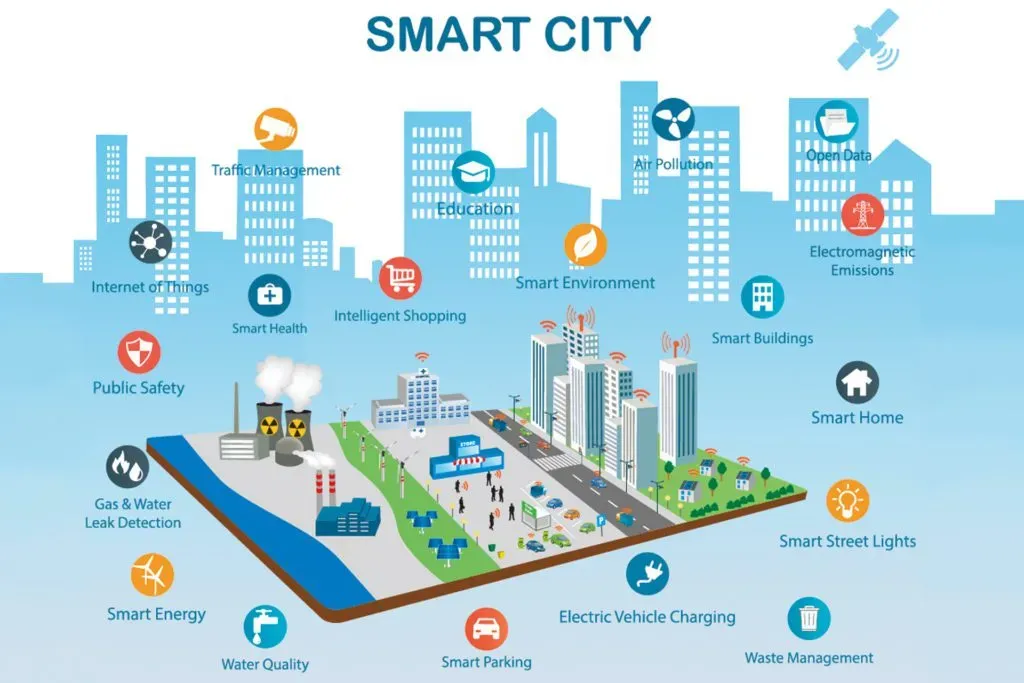Smart Cities and IoT are driving a fundamental transformation of urban life, turning streets, buildings, and utilities into a highly observable, data-driven ecosystem. By connecting streetlights, air-quality sensors, transit systems, and citizen devices, cities gain real-time visibility that supports safer, cleaner, and more efficient services. IoT in smart cities further enables operators to balance energy use, reduce waste, and tailor programs to the needs of residents, while keeping privacy and security at the forefront. Key components include urban sensors, data analytics for city planning, and interoperable architecture that supports scalable, accountable decision-making. As cities embrace this approach, they unlock smarter mobility, more resilient grids, and better public engagement, all while addressing growth and equity.
Viewed through the lens of connected urban infrastructure, the city becomes a living information network where devices, networks, and analytics work in harmony. Instead of isolated systems, municipalities deploy sensor networks, edge computing, and standardized data models to monitor air quality, traffic, and energy use. This approach supports a data-driven planning process—data analytics for city planning—that informs investments in a smart grid, transit optimization, and resilient public services. Framing the transformation as IoT in smart cities or, more broadly, as urban intelligence, highlights how digital layers enable smarter mobility and proactive governance. By emphasizing interoperability and citizen-centric design, cities can scale responsibly while maintaining privacy and security.
Smart Cities and IoT: Real-Time Governance for Safer, Cleaner, and More Inclusive Urban Living
Smart Cities and IoT enable a connected fabric where streetlights, air-quality sensors, transit dashboards, and emergency systems stream data to municipal centers. This real-time visibility supports safer streets, cleaner air, and more inclusive services by enabling targeted interventions, predictive maintenance, and rapid incident response. By embedding IoT-enabled devices across the urban landscape, cities can monitor congestion, energy use, water quality, and public safety metrics—creating a digital nervous system that informs governance and engages residents.
Implementing this vision requires interoperable infrastructure, layered security, and privacy-by-design. Edge computing and centralized or distributed data platforms turn raw sensor streams into actionable insights, supporting data analytics for city planning, IoT in smart cities initiatives, dynamic policy adjustments, and equitable service delivery. The result is decision-making that prioritizes resilience and quality of life, with planners, utilities, and safety agencies sharing a common, real-time picture of the city.
IoT-Driven Urban Insights: Urban Sensors, Smart Grid, and Data Analytics for City Planning and Mobility
Urban sensors—air quality, noise, traffic detectors, and water quality sensors—form the frontline of city intelligence, feeding continuous streams that illuminate hotspots and trends. When this data is integrated with the smart grid and energy-management platforms, utilities can orchestrate demand response, reduce peak loads, and boost resilience while cutting emissions.
Data analytics for city planning translates sensor data into tangible mobility improvements, such as adaptive signaling, dynamic transit routing, and smart mobility options. By combining analytics with open data policies and citizen engagement, cities can design more efficient mobility networks and ensure equitable access to services, turning IoT insights into practical upgrades across streets, sidewalks, and public spaces.
Frequently Asked Questions
What are Smart Cities and IoT, and how do urban sensors support safer, cleaner, and more efficient city services?
Smart Cities and IoT describe a connected urban system where devices such as environmental sensors, traffic cameras, and meters feed real-time data into city operations. Urban sensors enable monitoring of air quality, noise, traffic, and infrastructure health, allowing authorities to respond quickly, allocate resources efficiently, and improve safety, cleanliness, and quality of life for residents.
How does IoT in smart cities enable data analytics for city planning and improve smart mobility?
IoT in smart cities collects data from street networks, transit systems, and public utilities, which data analytics for city planning can translate into actionable insights. This enables optimized traffic flow, dynamic transit scheduling, better parking management, and smarter mobility decisions, while supporting resilient infrastructure and more sustainable urban living.
| Aspect | Key Points |
|---|---|
| What are Smart Cities and IoT? |
|
| IoT’s role in city systems |
|
| IoT Layer / Devices & Examples |
|
| Key Technologies & Architecture |
|
| Impact Areas & Benefits |
|
| Challenges & Considerations |
|
| Path to Adoption for Municipalities |
|
| Case Insights / Practical Examples |
|
Summary
Conclusion: Smart Cities and IoT offer a powerful framework for transforming urban living by connecting devices, data, and governance to deliver safer, cleaner, and more efficient cities. The fusion of IoT-enabled devices with advanced analytics enables real-time decisions, responsive services, and greater resident participation, while mindful attention to privacy, security, interoperability, and equity is essential. Cities should begin with pilot programs, open data, layered security, and robust governance to realize scalable benefits. As Smart Cities and IoT mature, they can foster resilient, inclusive urban ecosystems that improve quality of life and drive sustainable growth.

